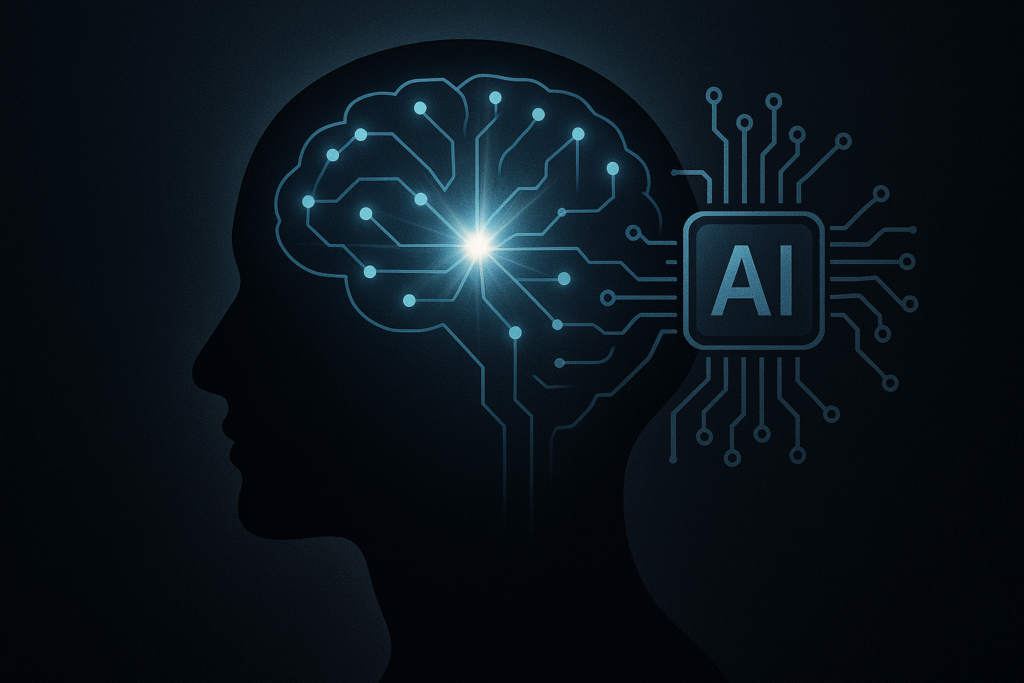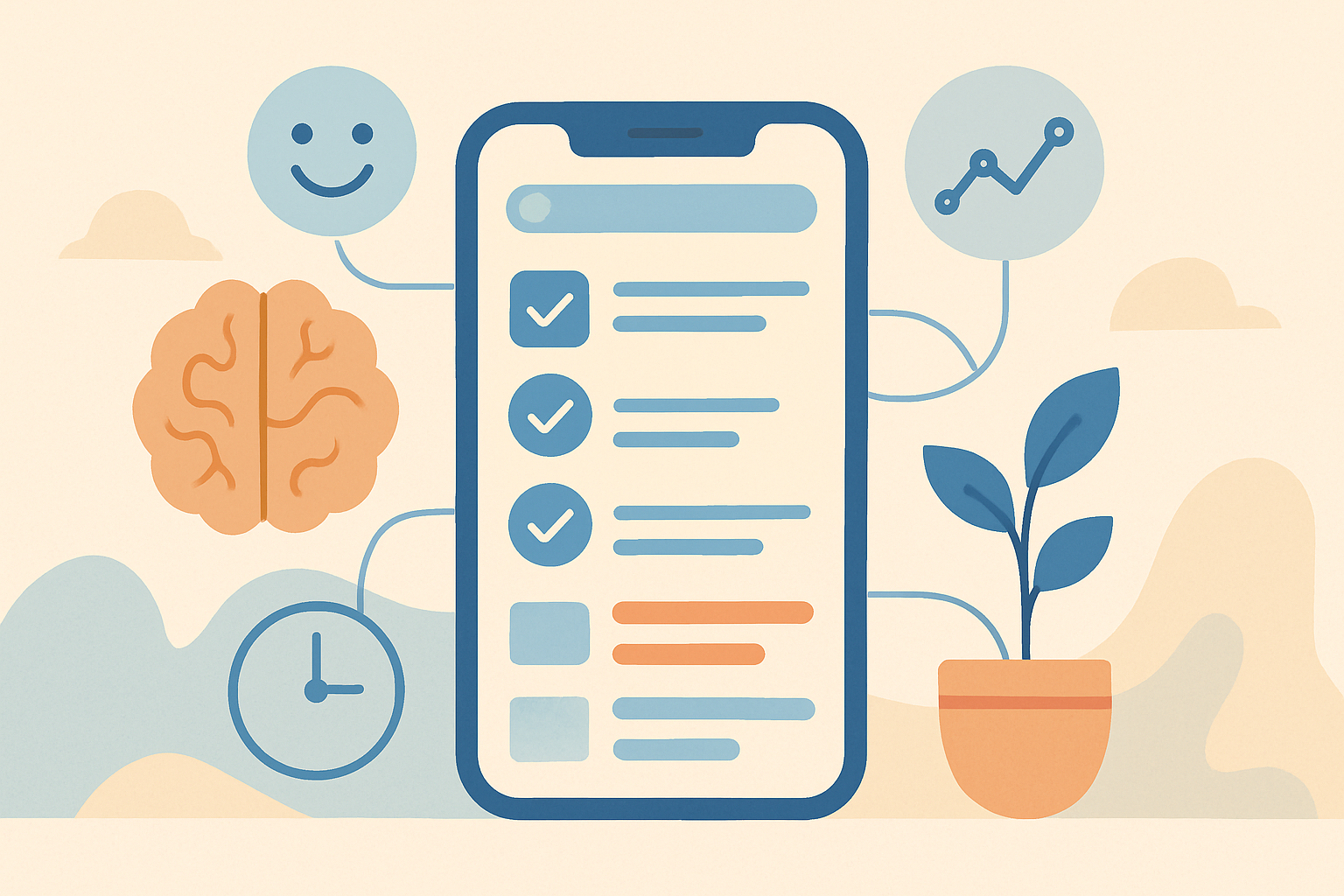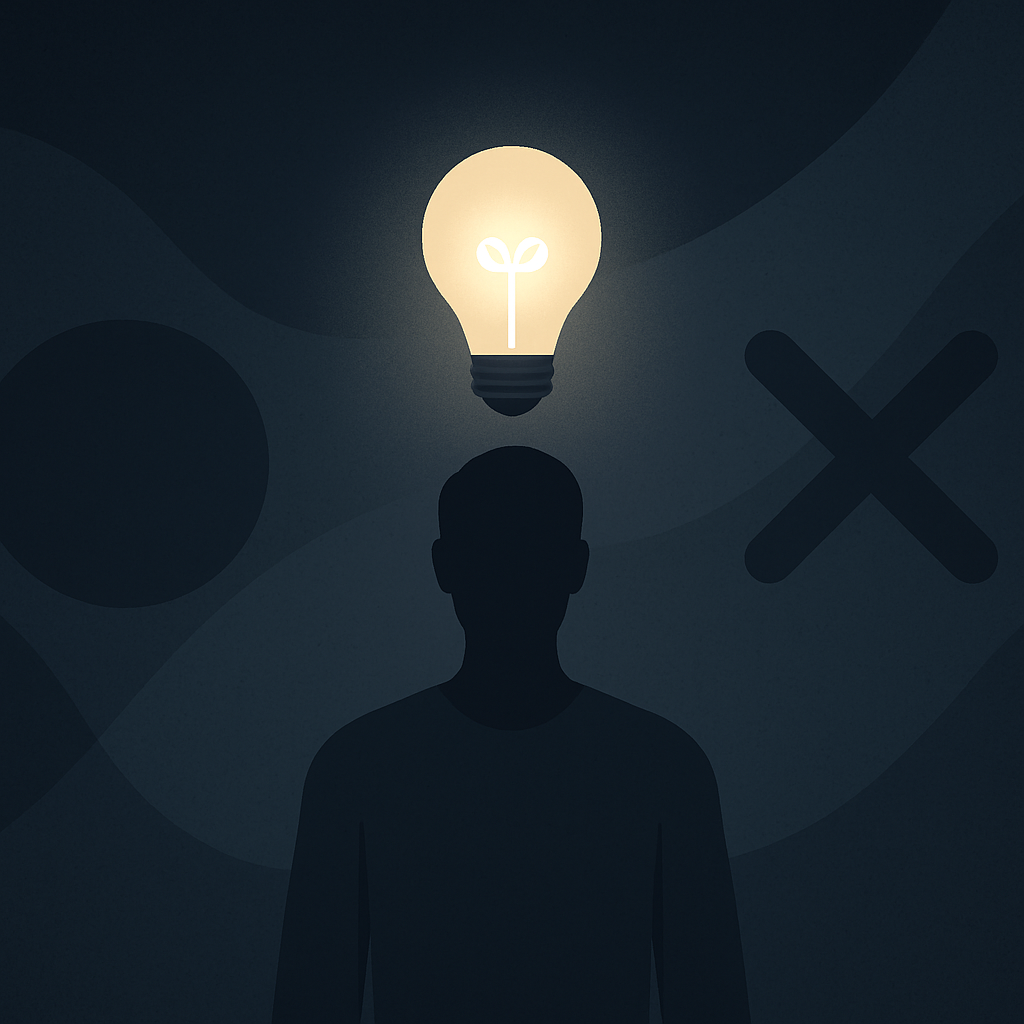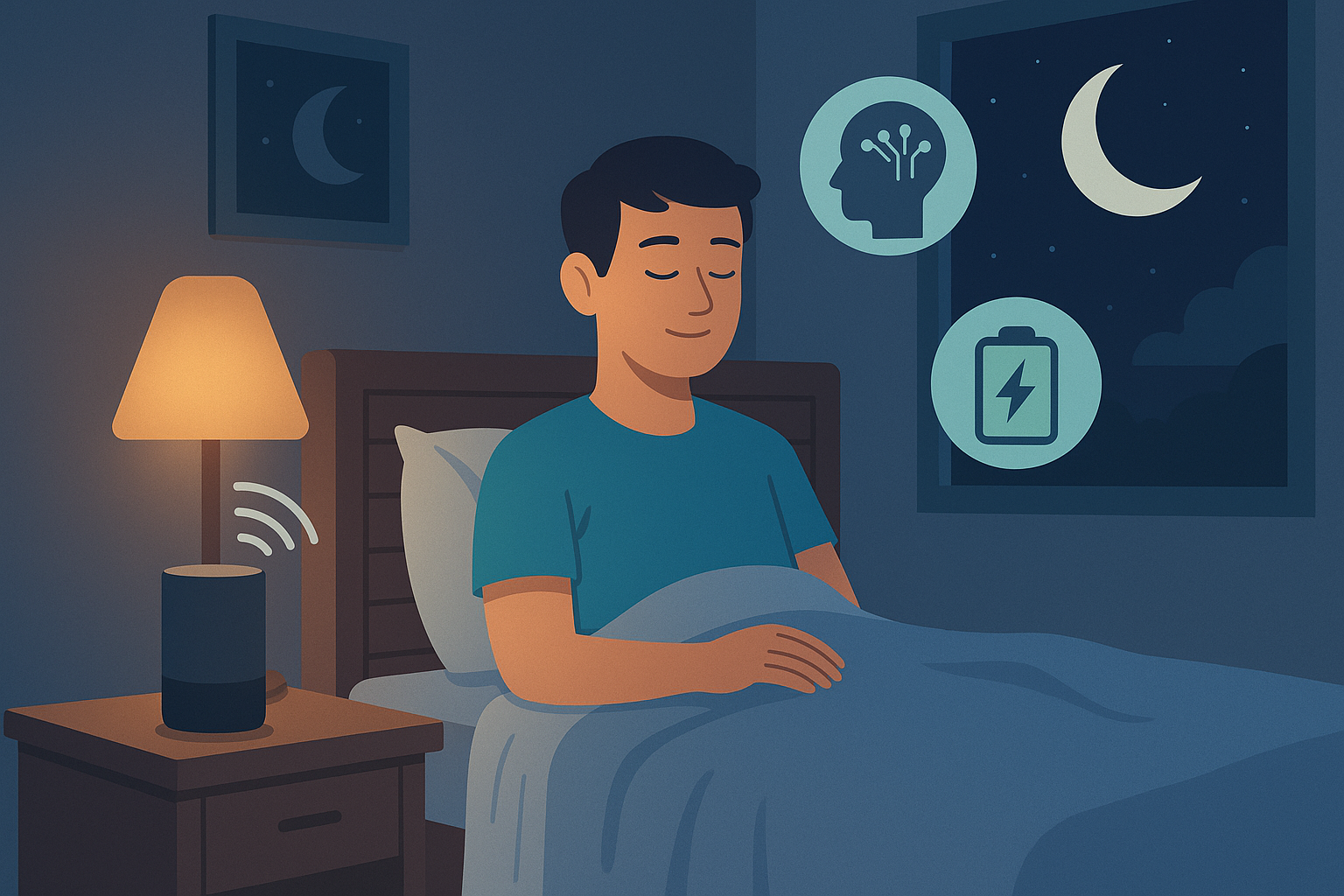In the age of constant notifications and infinite scrolling, our ability to focus has become both rare and valuable. Mental focus is not just about paying attention — it’s about directing the brain’s energy to what truly matters, for as long as it matters. Modern neuroscience shows that focus is a skill you can train, and artificial intelligence now offers the tools to accelerate that process.
Understanding how attention works and how to enhance it with AI can transform the way you work, think, and create. Let’s dive into the science of focus — and how you can train your mind to perform at its best.

Understanding Mental Focus
Focus begins in the brain. It’s a function of the prefrontal cortex — the control center responsible for decision-making, goal setting, and self-regulation. When you concentrate on a task, your brain filters out irrelevant information through what neuroscientists call the dorsal attention network, a system that guides your spotlight of awareness toward a single target.
But this mechanism isn’t always efficient. Modern environments overload it. Every alert, message, and open tab competes for attention, splitting cognitive energy into fragments. Over time, that fragmentation reduces productivity, increases fatigue, and weakens the neural circuits that sustain concentration.
The good news: focus isn’t fixed. Just like a muscle, it strengthens through deliberate practice — and now, through intelligent digital feedback.
The Brain-AI Connection
AI can play an unexpected role in improving mental focus. Algorithms capable of detecting attention drift, analyzing digital habits, and predicting fatigue can act as external trainers for your brain. When combined with the behavioral insights of neuroscience, AI creates a feedback loop: the brain learns to stay present, while technology helps maintain the right environment for deep work.
Imagine beginning your day with a system that scans your schedule, identifies your high-energy hours, and automatically blocks notifications during that window. While you work, background AI monitors subtle distractions — perhaps a browser tab left open — and gently redirects your attention to the active document. Over time, these nudges train your brain to associate deep work with calm, single-task engagement.
This synergy between cognitive science and AI support is what makes the modern focus revolution possible.
How to Build Focus from the Ground Up
To cultivate real concentration, you first need clarity. Focus deteriorates when the mind doesn’t know what to aim for. Setting an intention before each work session — a single, clearly defined goal — tells your brain what matters and helps the prefrontal cortex prioritize neural energy.
Once you have clarity, rhythm becomes essential. The brain naturally operates in cycles of about 90 minutes of intense activity followed by a short recovery period. Instead of fighting these biological rhythms, design your work to match them. You might choose 45-minute focus blocks separated by mindful breaks. During those moments of rest, AI-guided breathing or short meditations can help your brain reset rather than slip into digital noise.
Rest is not a luxury; it’s part of the focus system itself. Neuroscientists at Penn Medicine have shown that short pauses reactivate the attention network more effectively than prolonged strain. AI tools like Mindfulness Coach or Calm AI can detect when you’ve been active for too long and suggest a reset sequence — a breathing cycle, a stretch, or even a short visual cue to shift state.
Designing an Environment that Supports Mental Focus
The digital environment you build either amplifies or erodes focus. Every click, tab, and vibration consumes small fragments of attention known as “micro-distractions.” Over hours, they drain mental energy faster than any single interruption.
AI can filter that noise. Tools like Freedom, RescueTime, or Serene AI learn your habits, identify high-risk distractions, and create intelligent blocklists that adapt dynamically to your workflow. For instance, if you tend to drift into social media after 20 minutes of writing, the system will automatically close those tabs or blur them temporarily, allowing the mind to return to a single task.
Pair that with ambient intelligence: adaptive lighting, soundscapes, and temperature optimization can influence the brain’s attentional state. Platforms such as Brain.fm or Endel use AI-generated sound patterns based on EEG research to synchronize brain waves with focused mental states. Users report measurable improvements in sustained attention and reduced fatigue.
Try it: before starting your next creative session, put on Brain.fm’s Focus Mode for 40 minutes, silence notifications, and tell ChatGPT to summarize or queue your pending emails for later. Observe how much deeper your attention feels — and how your thoughts stop racing in multiple directions.
The Role of Mindfulness and Cognitive Calibration
Mental focus isn’t about force. It’s about presence. You can’t demand attention from a scattered mind; you invite it through awareness. That’s where mindfulness becomes a practical tool.
By practicing short, AI-assisted mindfulness sessions, you train your attention to notice distraction and gently return to the present task. Over time, this builds a stronger attentional control network in the brain. Apps like Waking Up or Balance use machine learning to adapt the duration and complexity of meditation based on your consistency and stress levels.
A simple, science-based exercise: take three deep breaths, close your eyes, and ask yourself, What am I focusing on right now? Each time you notice your attention wandering, mark it mentally as “thinking” and return to your anchor — your breath, your body, or your work. That awareness loop is the foundation of mental focus.
Nutrition, Rest, and Cognitive Energy
Focus requires biological fuel. The prefrontal cortex consumes significant amounts of glucose and oxygen, making hydration, balanced nutrition, and proper rest essential components of cognitive performance.
AI-driven wellness trackers like Eight Sleep or Oura Ring can measure your recovery quality and suggest optimal sleep patterns based on nightly data. Similarly, nutrition assistants like Zoe or Lumen use machine learning to analyze how your body metabolizes food and when your glucose levels peak, helping you align deep-work sessions with moments of natural alertness.
Practical takeaway: if you usually crash around 3 p.m., avoid heavy meals before that period and use AI feedback to plan lighter, high-protein snacks. Combine that with a 10-minute walk instead of caffeine — it re-oxygenates the brain and restores attention far more effectively.
When AI Becomes a Cognitive Partner
The most powerful applications of AI for mental focus act as companions rather than controllers. They provide data, insight, and gentle accountability. A well-designed system learns from your patterns — the hours you perform best, the tasks that derail you, and the routines that improve concentration — and adjusts automatically.
For example, combining Notion AI with ChatGPT and Zapier can automate your task review process each morning. Your workspace loads with only two active tasks, your music app sets the appropriate soundscape, and your browser hides distracting icons. At the end of the day, the system generates a short reflection report: time in flow, main distractions, and suggested improvements for tomorrow.
This automation doesn’t replace human discipline; it supports it. It frees your cognitive bandwidth from constant decision-making so your mind can engage in deeper, more creative work.
A Practical Example: Deep Work with an AI Companion
Imagine you’re writing an article, building a proposal, or analyzing a complex problem. You begin by opening Notion AI, which summarizes your objectives and breaks the project into small milestones. You start Brain.fm in Focus Mode to create an auditory environment that helps sustain your attention. ChatGPT remains open in another tab, ready to clarify concepts or summarize research.
Before beginning, you define a clear intention: “For the next hour, I’ll focus on outlining the main sections.” An AI tool like Motion automatically blocks your calendar and silences notifications. If you wander to another tab or check your phone, the system gently alerts you. After 50 minutes, it pauses the session and suggests a three-minute breathing break before resuming.
By the end of the day, your assistant has compiled a visual report of time spent in focus, interruptions avoided, and overall cognitive energy. Over a week, these micro-adjustments reprogram your brain’s reward system to associate focus with calm efficiency instead of stress and rush.
The Deep Work Ecosystem
Mental focus thrives when technology and behavior align. The concept of deep work, popularized by Cal Newport, emphasizes the deliberate creation of distraction-free periods where cognitively demanding tasks can reach maximum depth. AI can extend this practice beyond self-discipline by managing the logistics of focus — scheduling, blocking, and environmental control — allowing humans to stay immersed in creative flow.
The result is a feedback loop: the more you train your focus with AI assistance, the less dependent you become on external systems. Your mind internalizes structure, self-awareness, and clarity. Eventually, you need fewer interventions; focus becomes your default state.
The Ultimate AI Workflow for Freelancers in 2025
Bringing It All Together
The science of focus reveals a simple truth: attention is both biological and trainable. By combining neuroscience-based habits with AI’s precision and feedback, you can transform your scattered mental energy into deep, sustained engagement.
Build an environment that supports attention rather than fragments it. Use AI to track, protect, and gently guide your concentration without micromanaging it. Treat focus not as a struggle but as a rhythm — effort followed by renewal, input followed by clarity.
The modern world rewards those who can think deeply amid noise. With the right tools and awareness, that skill is no longer reserved for a few. It’s a practice you can build — one focused moment at a time.
Suggested external readings:
- The Neuroscience of Attention – Penn Medicine
- The Science of Focus – Er Ricker Blog
- AI Tools for Deep Work – QuizCat AI
Blog
This section provides an overview of the blog, showcasing a variety of articles, insights, and resources to inform and inspire readers.
-

AI Habit Tracking and the New Rhythm of Modern Self-Improvement
AI Habit Tracking. Progress used to depend on discipline. Now, it depends on data.…
-

AI Decision Making and the New Discipline of Intentional Living
AI Decision Making. Every “yes” has a cost. Every time you agree to something…
-

The Perfect AI Night Routine to Sleep Better and Think Smarter
AI Night Routine. Your morning doesn’t begin when you wake up — it begins…
